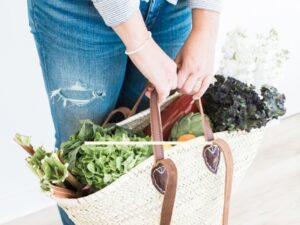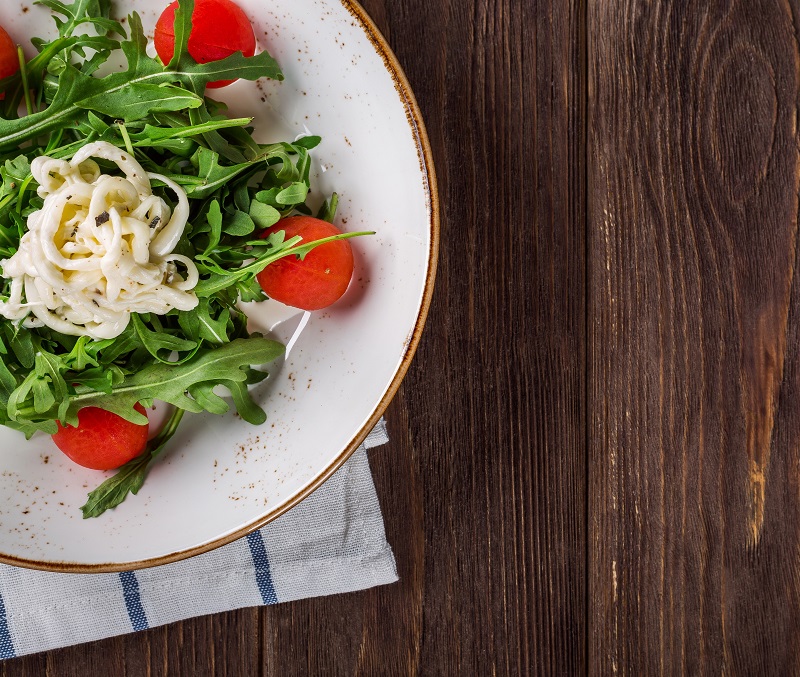With these simple strategies, you can stretch your grocery budget and hopefully reduce some of your financial stress and anxiety.
In almost every house, the kitchen is the one space that could be deemed a “money pit.”. I believe I could shop for groceries every day and never run out of things to buy. .
Everyone is always hungry, always eating, and always costing me money!

I used to have to constantly look for new ways to save money if I wanted to make it to the next paycheck back in the ultra-frugal days when we only had three pieces of furniture and I dried our wet laundry on lines in our basement (for real!).
I always planned our meals out for the week, and I clipped coupons like our survival depended on it. Because they kind of did. By cutting costs on food, I also discovered a ton of other ways to stretch a dollar.
18 Simple Ways to Save on Food.
1. Red peppers should be replaced with green peppers.
Use the less expensive green peppers in recipes rather than the more expensive colored peppers. Likewise, search for additional less expensive ingredients for your recipes. Make an apple pie instead of a blueberry one. As an alternative to green beans or asparagus, serve carrots or sweet potatoes.
2. create your own chicken stock.
Homemade chicken stock is something I adore. I adore using up chicken leftovers. The aroma from the stove is my favorite. I adore how delicious it tastes in dishes like homemade chicken soup. It is made from ingredients that would typically be thrown away and is miles ahead of canned food in terms of quality.
3. Offer pasta. A lot.
Kids adore pasta, and it is inexpensive. Our family practically subsisted on the substance for years. Rigatoni in a baked dish is one of our favorite pasta dishes. Yum!

4. You can substitute buttermilk with plain yogurt or sour cream.
When making biscuits or pancakes, I almost always use diluted sour cream or plain yogurt. Typically, I use two thirds milk and one third yogurt (or sour cream). The science is not exact. Just the right amount of thinness—not too runny—is what you’re after.
5. Instead of purchasing fresh herbs, use dried ones.
Fresh herbs can often be replaced with dried ones in recipes. Use about a third as much dried herbs as you would fresh ones (i.e. e. Three tablespoons of fresh herbs are equivalent to one tablespoon of dried herbs.
6. Grow your own herbs for freshness.
Even though I have a terrible green thumb and usually kill any plant that dares to enter my home, I can usually grow herbs (at least temporarily). Growing your own is much more affordable than purchasing them in bunches or packs at the grocery store, even if they only last for a few uses.
7. Use dried beans rather than canned.
Use dried beans rather than canned ones when preparing bean soup, beans and rice, or chili. To make it simple to replace canned beans in recipes, you can even pre-cook the beans and freeze them in two-cup portions in freezer bags.

8. Divide the price by the number of servings.
Choose bags that contain more pieces of smaller fruit when you are purchasing packaged items like bags of apples and oranges. A 3-pound bag with twelve smaller apples will last longer than the same weight bag with ten larger ones because you typically only eat (or serve to your child) one apple or orange at a time.
9. Make straightforward, low-cost sides.
Consider how you can make side dishes with ingredients like rice, potatoes, carrots, and cabbage. These ingredients are affordable and versatile in preparation. To make the main dish last a little longer, you can also serve homemade biscuits, cornbread, or a loaf of French bread with your meal.
10. When serving, cut the meat.
When you don’t serve each person a whole steak or chicken breast, the meat goes a lot further. Before serving, the meat is cut into pieces in the kitchen. Furthermore, you won’t have to waste the first fifteen minutes of your meal chopping up food for all of your little ones.
11. Make tacos for the family.
The meat appears to vanish before everyone has even finished the line when the kids prepare their own tacos. You can “ration” the meat and stretch it to fit each taco shell when you prepare the tacos all at once. To prevent the shells from toppling over while you are filling them, it helps to stand them up in a 9 x 13 baking dish.
12. Rather than using lemons, buy bottled “real lemon juice.”.
Bottled juice works just as well in most recipes as fresh lemon juice, which can be pricey. We can’t tell a difference and even use it to make homemade lemonade.

13. Use simple recipe books with simple ingredients.
My preferred cookbooks use straightforward, everyday ingredients that I frequently have on hand. When you need to buy expensive or exotic ingredients for a single recipe that you aren’t even sure your family will like, the cost of meals can quickly mount up. Try Joy of Cooking if you don’t already have one; it’s one of my favorite basic cookbooks.
14. Ingredients in a recipe that won’t be missed should be cut out.
You probably won’t be able to identify every flavor in a recipe unless you’re a trained palate or a chef. Keep an eye out for ingredients that you can omit without much of an impact on the dish’s outcome.
15. Avoid going to the store.
You should occasionally set a goal for yourself to delay your shopping trips a little longer. It forces you to get inventive and use foods that would otherwise be wasted or overlooked when you have to “shop” your pantry, refrigerator, or freezer for meals and snacks.
Take advantage of our FREE Simple Decluttering Cheatsheet!
Learn how to choose the ideal location to start decluttering AND step-by-step how to deal with the mess in any room in your house to start feeling at peace. Additionally, receive my best advice straight to your inbox for FREEEEEE!
My preferred email address is.
SEND ME YOUR DECLUTTERING CHEATSHEET!
We keep your email private. We have no desire to give it to anyone else!
16. Delete the dessert course.
I don’t often make dessert, which may make me sound like a mean mother (and maybe I am). Using eggs and butter in treats is too expensive when money is tight. Additionally, dessert is truly special when it is only served occasionally (at least, that is what I tell my kids).
17. bread you make yourself.
For a while, I made all of our bread. After some practice, making French bread was easy and everyone agreed that it tasted much better than store-bought bread. Additionally, it is much better when served alongside pasta or with soups.
18. Make arrangements for leftovers.
Utilize leftovers in unique ways on your menu. Consider adding a second meal that uses the leftovers to your menu for each meal you plan. If it’s stated in your plan, you’ll be much more likely to actually use them.
Start saving small and don’t stop!
Every penny counts when money is tight, and over time, every cent adds up to dollars. You’ll start looking for ways to save money in other areas as well as on food as you make small adjustments more frequently.
The little things can sometimes serve as a catalyst for finding more significant ways to improve your family’s financial situation. Make use of these concepts as a starting point for your own cost-cutting ideas!










